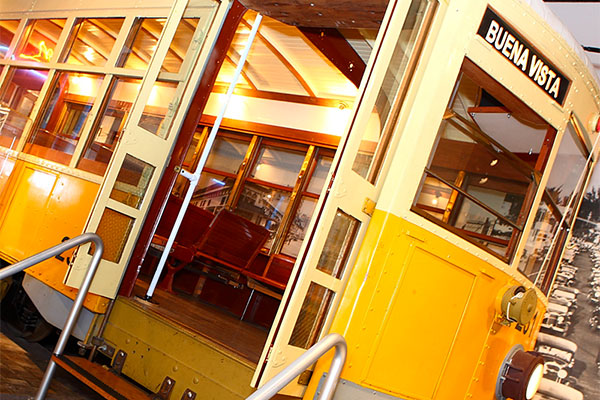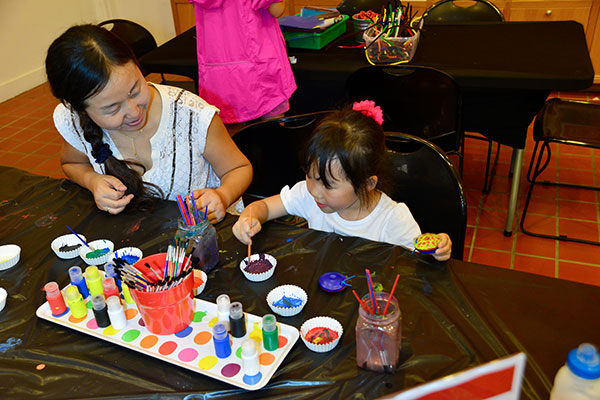Volume 35, No 1 (2007)
History of a History Museum
Find out when the Historical Museum first opened its doors, had its most worrisome day and gained its most valuable artifact, as well as how the dedication of a few has come to benefit the whole South Florida community.
Germany’s Airship, Graf Zeppelin
by Stewart B. Nelson, PhD.
The trips the Graf Zeppelin made to the United States were always highly anticipated by Americans, but its last visit would be its most famous–from the postage stamp created to underwrite its costs, to the controversial swastika painted on its port side.
Smith Bookstore and Banyan Place
by Eugene E. Threadgill
The Smith Bookstore began as a small store where the family also lived, but it quickly became a thriving business that brought the Smiths much prosperity, and, for a brief time, was the site of a local scandal.
Mastodon Hunters in a Waning Ice Age
by Mark Mathosian
While the South Florida of today may have its dangers, its earliest settlers had to hunt animals larger than today’s elephants, avoid predators such as saber-toothed cats and use mastodon pelts to create make-shift shelters to survive.
The Gulf Stream Pirate: James Horace Alderman
by Paul S. George, Ph.D.
Of the stories involving rumrunners operating in and around South Florida during the Prohibition era, the most sensational centered on the murderous activities and subsequent execution of James Horace Alderman, the “Gulf Stream Pirate.”
Volume 35, No 2 (2007)
Man’s Best Friend–Even in Death
by William Straight, M.D.
Among the more interesting discoveries at the recently completed dig at DuPont Plaza was that of a dog buried next to a human.
Tracing Miami’s History through its Native Habitat
by Hugh A. Ryan
The subtropics offer a broad array of distinctive plants and trees.
Rob Storter: Genesis of an Artist
by Joanne Hyppolite, PhD.
A fisherman drew on his precious memories of pioneer life in the Everglades to crate an impressive body of drawings and carvings.
Miami Bungalows
by Jose Vazquez
Early Miami was dotted with bungalows exhibiting a myriad of styles and features.
Fort Lauderdale’s Life Saving Station Number Four
by Paul S. George, PhD.
Lonely wayfarers and shipwreck victims sometimes received assistance along the desolate coast of southeast Florida.
Volume 36, No 1 (2008)
The Miami Circle: The Tequesta Legacy
by Robert Carr
Archaeologist Robert Carr summarizes our knowledge of the Miami Circle and the Tequesta Indians who built it.
My Miami: Growing up in Highland Park
by Joan Canner
The author recalls her mid-20th century childhood in the Miami neighborhood near Jackson Memorial Hospital.
Miami Junior Chamber of Commerce
by Alan Sokol
This history of the Jaycees describes its origins and some of its civic contributions to the Magic City.
Miami’s First Maestro
by Natan Samuels
A biographical sketch of Arnold Volpe, an early Miami cultural leader largely unknown today.
Volume 36, No 2 (2008)
He Was Capone’s Son
by Eliot Kleinberg
Al Capone Jr., known to all as “Sonny,” struggled throughout his life to get out from under his father’s broad shadow.
From Miramar to Magnolia Park: The City of Miami’s Historic Northeast Neighborhoods
by Eugene E. Threadgill, Dean Miller and Gibby Dey Wright
Few recall today the beautiful neighborhoods lining Biscayne Bay in the area northeast of downtown Miami.
A Home in the Wilderness: The Biscayne House of Refuge
by Paul S. George, PhD.
The Biscayne House of Refuge represented one of the few facilities on the frontier that was southeast Florida little more than 100 years ago.
Deaconess Harriet Bedell and the Glades Cross Mission
by Robin E. Parker
One woman’s unique influence was felt in many places, including the wetlands of South Florida.
Volume 36, No 3 (2009)
Interama: Miami and the Pan-American Dream
by Jean Francois Lejeune
The author chronicles the history of this ambitious hemispheric fair, that never materialized.
Necropolis Cristobal Colon
by Raul L. Rodriguez
Architect Rodriguez describes one of the world’s most extraordinary cemeteries, in Havana, Cuba.
Travels of a Barefoot Mailman: A Painting’s Story
by Courtland Lewis
The author tells the story behind a prize-winning painting of the barefoot mailman, and its painter, Lynn Ash.
Dudley Whitman and the Whitman Family Museum
by Dr. Paul George
A biographical sketch of Dudley Whitman and a description of the Whitman family museum in Bal Harbour.
Transoceanique
by Matthew Loving
an English Translation of a 1908 Article Appearing in the French Periodical, A Travers Le Monde. A contemporary French magazine comments on the building of the Florida East Coast Railway Oversea Extension.
Volume 37, No 1 (2009)
Black Crossroads: The African Diaspora in Miami
by Joanne Hyppolite, PhD.
Explore the history and impact of African-Americans, Africans, black Caribbeans and black Hispanics on the Miami region.
Michael Oxar: An Early Pioneer of Miami
by Hannah Grace Oxar
Michael Oxar, who despite the hardships of living in a subtropical, mosquito infested wilderness, contributed to the birth of Miami.
Arch Creek Park
by Mary Oxar
Arch Creek Natural Bridge, in North Miami, has numerous tales stored in its limestone cracks and crevices.
Lt. Alexander Ramsey Nininger, Jr.
by Mary Zakis
Alexander Ramsay Nininger, Jr., was America’s first Congressional Medal of Honor winner in World War II.
Interview with Arthur Hertz
by Paul S. George, PhD.
Arriving as a youth with his family in 1946, Arthur Hertz became one of Miami’s leading business and civic figures.
HM replaced South Florida History beginning in 2010.



